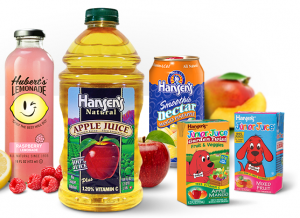- 30 years experience in the field of Special Education
What Are The Unhealthiest Foods for Children?
Successful Summer Vacation Tips for High School Students
July 14, 2016Dental Health Tips for Kids
July 21, 2016 Left to their own devices, your child would eat anything and everything that contained sugar and subsequently would be bouncing off the walls. Your mom, and her mom before her, knew that cereal encrusted with sugar was no prize when it came to breakfast food nutrition, and, so she may have tried to force feed oatmeal or cream of wheat into you so you were healthy.
Left to their own devices, your child would eat anything and everything that contained sugar and subsequently would be bouncing off the walls. Your mom, and her mom before her, knew that cereal encrusted with sugar was no prize when it came to breakfast food nutrition, and, so she may have tried to force feed oatmeal or cream of wheat into you so you were healthy.
Of course it doesn’t help that kids watch cartoons or TV. programs geared especially to them, and the ads are all about having Pop-Tarts and sugary cereal for breakfast, so… naturally your child is going to clamor for these breakfast items, especially if there are gimmicky toys or goodies to be had inside the cereal box.
Kids often mimic their parents… oh, not just the conversations or the actions, but, if you are stuffing your face from an extra-large bag of Doritos (not to disparage this great product), or, you’ve just polished off one entire side of the tray of Oreos (mmmmm – yummy), however do you expect your child to embrace nutritional food? So, parents… it is up to you to set a good example first, then aim to buy and serve your little ones the healthful dishes and snacks they so richly deserve.
Good eats and treats
Sometimes there is no negotiating with a child, even though, as a parent you’d think you had the upper hand. But, if you can present nutritious foods in a fun way, maybe you can persuade your youngster to turn their nose up at the sugary treats and opt for a wholesome peanut butter and sliced banana sandwich on whole grain instead?
Nutritionists will tell you it is easy to discern the obviously healthy foods, like having a handful of berries sprinkled on some Greek yogurt, or slicing a banana onto a dish of hot oatmeal versus having a fat-laden oversized blueberry muffin. Or, having whole-grain pita bread stuffed with tuna salad and cut-up veggies with low-cal dressing on the side, versus a greasy burger and fries. But, sometimes those food manufacturers are sneaky indeed, because the treats that parents believe may be nutritious, actually are chock-full of hidden fats and sugars and are actually zero nutritional value.
Be in the know
Here are some of the worst items you might feed your children when it comes to breakfast, lunch, dinner, beverage and snacks, and also included are healthy options.
Breakfast
Sugar-laden breakfast food may tout their vitamins and minerals, but actually offer no nutritional value. Nutritionists recommend that you feed children cereals with at least 3 grams of fiber and less than 10 grams of sugar. If you can get your child to like whole-grain oatmeal, you’re all set. It is high in fiber, minerals, vitamins and with a sprinkle of berries, or a dollop of yogurt and a little real maple syrup, that is the perfect breakfast. A word to the wise, however,… don’t be tempted to load granola anything into your shopping cart. It may seem like a healthy snack, but whether it is served as a breakfast cereal, or in a bar-like form, you are getting little or no nutritional value and each bar may be laden with sugar plus added ingredients geared to kids like chocolate chips, marshmallows or candy, not to mention high fructose syrup and artificial dyes. One granola bar equals two cookies. If you are so inclined, you can make your own granola or energy bars filled with natural ingredients like almond or peanut butter, raisins, coconut, whole grain cereal, honey, and dried fruit and nuts.
Lunch
Luncheon meats are a bad choice to pile on your child’s sandwich. Even if you opt for serving only turkey, as opposed to beef bologna, ham, olive loaf or roast beef, nutritionists are quick to point out that all lunch meats are loaded with nitrates, a preservative used in food processing that has been found to increase the risk of heart disease and cancer. A better option is to make egg salad, or tuna salad with low-fat olive oil mayo, or use dinner leftovers like turkey meatloaf or opt for vegetarian, meat-free options.
Buy natural cheese, and, with the trend to stray from skim or no-fat cheese and use whole-milk products, use one slice of Swiss or mozzarella cheese and stay clear from Kraft or store-brand single slices which are full of preservatives and not really a good dairy product.
White sandwich bread is a definite “no-no” and you should opt for whole-grain, not even wheat flour bread, bagels or wraps.
It is better not to use a margarine made with hydrogenated fats on that sandwich. The American Heart Association suggests using soft, trans-fat-free spreads instead of regular butter or stick margarine.
Snacks
Twinkies or Ding Dongs with lunch or as an after-school snack, these treats are full of trans fats, which has been found to be the unhealthiest fat known. How about if you transcend from these fat-laden treats to some home-baked cookies or squares, made from scratch using only natural ingredients? A nice bag of mixed berries or grapes are also a nutritious treat and natural with no trans fats.
Beyond the trans fats category, is the salty snacks that your kids enjoy. (You like ‘em too.) These would be treats like potato chips, puffy cheese snacks or fried goodies like pork rinds. You could try baked potato chips or kale chips… they have the crunch, without the calories or the dangerous substances in them.
Crackers are disastrous, even if it sounds healthy smearing some peanut butter on a salty cracker (like a Ritz) – you really are courting disaster because most snack crackers are made with processed white flour, preservatives and unhealthy oils. Choose crackers made with fibrous whole grains, and feel good about your child clamoring for crackers once again. Goldfish crackers come in whole grain too.
Fruit rolls are just an imposter posing as fruit because they are really gummy candy. If your child despises real fruit but will gobble up a gummy fruit roll instead, do find another way to serve bite-sized portions of fruit with a side dip like Greek yogurt or offer ice-cold grapes. They’ll get more vitamins plus fiber with the real deal. Dried fruits are also a good option – raisins in particular are portable and easy for little hands to open the boxes, but many dried fruits contain sulfites which may be harmful in abundance. Sulfites are found especially in raisins, dried apricots and prunes, and, may be harmful to children who may have a sulfite allergy.
Dinner
It is good to provide a nutritious dinner every day of the week, but, that is nearly impossible. At one time, families ate dinner together seven days a week, but now usually both parents have jobs and children have extracurricular activities, so it is much easier (and cheaper sometimes) to grab food on the run. That’s fine, but make it a smart choice.
Fast food appeals to everyone. You can order a small grilled burger with lettuce, tomato, onion, mustard and hold that creamy mayo, but, just as soon as you pair that burger with French fries, you’re asking for trouble. French fries are very unhealthy to eat – they are full of fat and starch and high in sodium. But, one cannot go the rest of their life without ever eating French fries again – especially once they smell them at the fast-food joint, so feed them to your child, but in moderation. At home, consider making your children baked potato wedges instead. Everyone has bought into the belief that pizza is good for you because it is comprised of the major food groups – but, you are throwing any nutritious value away when you stop at the pizzeria and pick up one of their pies. If you make your own pizza, you can put together a healthier pizza pie using a whole-wheat or whole-grain crust, low-fat cheese, shredded chicken (instead of beef) and lots of veggies.
Beverages
You never want to see a young child with a bottle filled with juice or soda – sure, those are just the baby teeth, but the acid from the juice is not good for your child’s oral health. As to juice boxes, a popular item to hand to kids when they are thirsty, they have zero nutritional value. Essentially, they are made of sugar, and they lack fiber and vitamins because they are not real juice. You can whip together whole fruits, yogurt, and ice and serve up a nutritious beverage for an afternoon snack instead.


